 spieth12@spiethstorage.com
spieth12@spiethstorage.com +86 18006010205
+86 18006010205
Home/News/Product News/Criteria and keys to choosing the right industrial shelving for your warehouse
LATEST NEWS
-
Time:9/15/2025
-
Time:9/10/2025
-
Time:9/5/2025
-
Time:9/2/2025
-
Time:8/27/2025
CONTACT US
-
 Tel : +86 18006010205
Tel : +86 18006010205
-
 E-mail : spieth12@spiethstorage.com
E-mail : spieth12@spiethstorage.com
-
 Address : Tongan Park, Tongan District, Xiamen, China 361023
Address : Tongan Park, Tongan District, Xiamen, China 361023
Product News
Criteria and keys to choosing the right industrial shelving for your warehouse
 Time:1/11/2022
Time:1/11/2022 1008
1008
A warehouse is essential for most businesses and it has much more functions than a simple space to store goods. An excellent (or bad) management of all operations in the warehouse (receiving and dispatching goods, preparing orders, maintenance, storage, etc.) would directly affect the performance of the company or business.
It is essential that the warehouse be located in a planned and structured location. After acquiring land and buildings, it is the first thing to do to prepare a proper warehouse design or layout for the business, taking into account the main storage areas. The core of all things is naturally the storage system for storing goods. The storage can be on the floor (without any type of mounting and support) or on industrial racks, which is the best option for most loads. However, there are a few types of heavy-duty industrial racking with characteristics that suit different and specific needs.
But the question is how do you choose the most suitable industrial racking? How do you know which logistics solution to install in your warehouse or distribution center?
Without a single and clear answer, certain criteria should be considered in the adaptation or optimization process of a warehouse with industrial racks. These are as follows.
The size of the warehouse is the decisive factor in choosing which storage system to use. In other words, the height and surface area of the warehouse should undoubtedly be the first factors to be considered.
For example, for warehouses with a height of more than 12 meters, an appropriate storage solution can completely optimize the verticality and thus the investment. It may be a warehouse with racks that support not only loads but also external enclosures and allow the integration of palletiser crane type automation systems, such as in a cladding rack warehouse.
However, for warehouses with reduced horizontal surfaces, the priority may be high-density storage to store the maximum number of unit loads, rather than direct access to goods. In this case, an appropriate storage system would be a compact solution, such as drive-in/drive racking systems, real-time pallet racking (FIFO) or push-back racking (LIFO) or pallet shuttle systems.
It is assumed that commercial organizations are fully aware of their products and everything related to marketing. Not all loads can be stored in any industrial shelf.
In terms of size, loads can be small or medium, large or very large. In other words, if the unit load is a carton that can be handled manually by a person, the shelving that will best accommodate that load is likely to be a long-span shelving or carton flow racking system. Adjustable pallet racking systems with galvanized pallets or particle board may also be installed as an option to store individual cartons.
However, if the unit load is a large pallet load, various industrial pallet racking options should be considered.
Loads may also be very large or very long. In this case, cantilever racking is best suited for storing these types of loads, which may be tubes, beams, etc., which are very common in outdoor warehouses. In short, understanding the type of load and its commercial management are criteria and factors to include when configuring a storage solution in a logistics center.
Another criterion to consider when sorting goods is inventory rotation, as certain storage systems prefer faster rotation than others. For example, perishable products or fashion accessories rotate very quickly because they need to be shipped in a short period of time to avoid spoilage or obsolescence.
FIFO live pallet racking has an incline that allows goods to move within the structure and is designed for people who need fast inventory turnover and want to optimize as much space as possible. The same is true for drives via compact racking or pallet shuttle racking systems. They all share a key differentiating feature: they work according to the FIFO management method, i.e., the first product in is the first product out. As a result, there is immediate access to the product to be unloaded.
This does not mean that fast rotation is always ideal for all companies and is not the goal of the warehouse. Direct access to goods or having industrial racks with a greater margin of adaptation in the future could be another option.
Many goods can be stored in a dry environment under normal environmental conditions, but certain products need to be stored in an environment to meet very specific conditions so that they do not deteriorate and thus cause losses. For example, certain items in the food sector require a refrigerated or frozen environment or COVID-19 vaccines as well as many other pharmaceuticals.
Storage systems that allow for temperature uniformity and cold air circulation can often be found in warehouses with cold rooms or freezers. These warehouses also typically have high density and compact storage solutions to utilize per cubic meter and where energy costs are fully optimized. Other options include mobile racking, drive racking systems and pallet shuttle racking systems. Adjustable pallet racking is more frequent in refrigerated environments, but less frequent in frozen environments.
There may also be a need to store fragile or hazardous products. For example, when installing industrial shelving where chemicals are to be stored, it is especially important to know the chemical compatibility of the products. This will indicate the extent to which a chemical can come into contact with another chemical without causing corrosion or or negative exchanges in their characteristics.
Whether we are talking about a new warehouse or are considering a redesign, it is important to consider the professionalism of the people who will work in the warehouse and the mechanical and technical resources they will have: forklifts, palletisers, etc. First, for simple operational planning, and second, because they are factors that require a certain investment.
For example, the initial investment in a conventional warehouse or an automated warehouse (either in pallets or cartons, as in small loading systems) will be different, in these warehouses the flow of goods will depend 100% on the automated machinery.
It is also necessary to implement employee safety measures as well as measures for the maintenance and prevention of industrial shelves and mechanical resources to help avoid any accidents and extend the life of the storage system.
It is essential that the warehouse be located in a planned and structured location. After acquiring land and buildings, it is the first thing to do to prepare a proper warehouse design or layout for the business, taking into account the main storage areas. The core of all things is naturally the storage system for storing goods. The storage can be on the floor (without any type of mounting and support) or on industrial racks, which is the best option for most loads. However, there are a few types of heavy-duty industrial racking with characteristics that suit different and specific needs.
But the question is how do you choose the most suitable industrial racking? How do you know which logistics solution to install in your warehouse or distribution center?
Without a single and clear answer, certain criteria should be considered in the adaptation or optimization process of a warehouse with industrial racks. These are as follows.
Features of the warehouse or building.
The size of the warehouse is the decisive factor in choosing which storage system to use. In other words, the height and surface area of the warehouse should undoubtedly be the first factors to be considered.
For example, for warehouses with a height of more than 12 meters, an appropriate storage solution can completely optimize the verticality and thus the investment. It may be a warehouse with racks that support not only loads but also external enclosures and allow the integration of palletiser crane type automation systems, such as in a cladding rack warehouse.
However, for warehouses with reduced horizontal surfaces, the priority may be high-density storage to store the maximum number of unit loads, rather than direct access to goods. In this case, an appropriate storage system would be a compact solution, such as drive-in/drive racking systems, real-time pallet racking (FIFO) or push-back racking (LIFO) or pallet shuttle systems.
Type of commodity or product to be stored.
It is assumed that commercial organizations are fully aware of their products and everything related to marketing. Not all loads can be stored in any industrial shelf.
In terms of size, loads can be small or medium, large or very large. In other words, if the unit load is a carton that can be handled manually by a person, the shelving that will best accommodate that load is likely to be a long-span shelving or carton flow racking system. Adjustable pallet racking systems with galvanized pallets or particle board may also be installed as an option to store individual cartons.
However, if the unit load is a large pallet load, various industrial pallet racking options should be considered.
Loads may also be very large or very long. In this case, cantilever racking is best suited for storing these types of loads, which may be tubes, beams, etc., which are very common in outdoor warehouses. In short, understanding the type of load and its commercial management are criteria and factors to include when configuring a storage solution in a logistics center.
Cargo movement and rotation.
Another criterion to consider when sorting goods is inventory rotation, as certain storage systems prefer faster rotation than others. For example, perishable products or fashion accessories rotate very quickly because they need to be shipped in a short period of time to avoid spoilage or obsolescence.
FIFO live pallet racking has an incline that allows goods to move within the structure and is designed for people who need fast inventory turnover and want to optimize as much space as possible. The same is true for drives via compact racking or pallet shuttle racking systems. They all share a key differentiating feature: they work according to the FIFO management method, i.e., the first product in is the first product out. As a result, there is immediate access to the product to be unloaded.
This does not mean that fast rotation is always ideal for all companies and is not the goal of the warehouse. Direct access to goods or having industrial racks with a greater margin of adaptation in the future could be another option.
Special Requirements.
Many goods can be stored in a dry environment under normal environmental conditions, but certain products need to be stored in an environment to meet very specific conditions so that they do not deteriorate and thus cause losses. For example, certain items in the food sector require a refrigerated or frozen environment or COVID-19 vaccines as well as many other pharmaceuticals.
Storage systems that allow for temperature uniformity and cold air circulation can often be found in warehouses with cold rooms or freezers. These warehouses also typically have high density and compact storage solutions to utilize per cubic meter and where energy costs are fully optimized. Other options include mobile racking, drive racking systems and pallet shuttle racking systems. Adjustable pallet racking is more frequent in refrigerated environments, but less frequent in frozen environments.
There may also be a need to store fragile or hazardous products. For example, when installing industrial shelving where chemicals are to be stored, it is especially important to know the chemical compatibility of the products. This will indicate the extent to which a chemical can come into contact with another chemical without causing corrosion or or negative exchanges in their characteristics.
Human and mechanical resources.
Whether we are talking about a new warehouse or are considering a redesign, it is important to consider the professionalism of the people who will work in the warehouse and the mechanical and technical resources they will have: forklifts, palletisers, etc. First, for simple operational planning, and second, because they are factors that require a certain investment.
For example, the initial investment in a conventional warehouse or an automated warehouse (either in pallets or cartons, as in small loading systems) will be different, in these warehouses the flow of goods will depend 100% on the automated machinery.
It is also necessary to implement employee safety measures as well as measures for the maintenance and prevention of industrial shelves and mechanical resources to help avoid any accidents and extend the life of the storage system.
If you are considering installing industrial shelving or redesigning your warehouse to fully optimize your space, please contact us here and our team will advise you on the most suitable solution.
Further Reading:
The Secret of Heavy duty shelving
Selecting the right pallet racking system for your business
Everything you might be interested in knowing about heavy-duty cantilever racking systems
The important role of wire for wire container storage cages
Industrial racking system: Heavy duty racking
Send Message
ONLINE SERVICE
-

-
 +86 18006010205
+86 18006010205 -
 +86 18006010205
+86 18006010205
 0
0
Browsing History







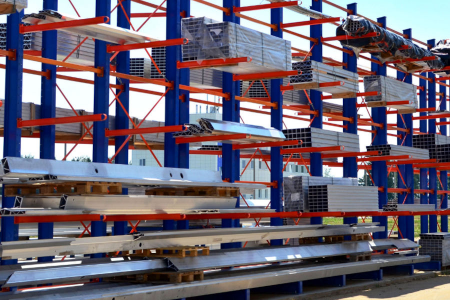
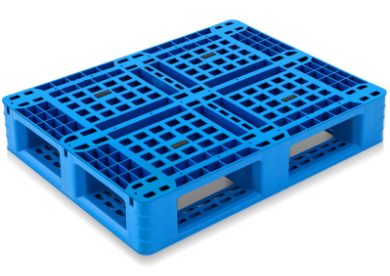
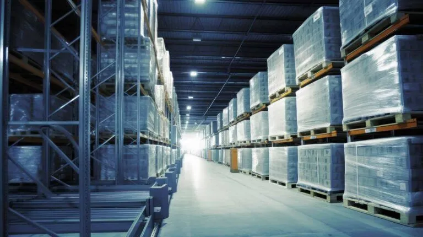
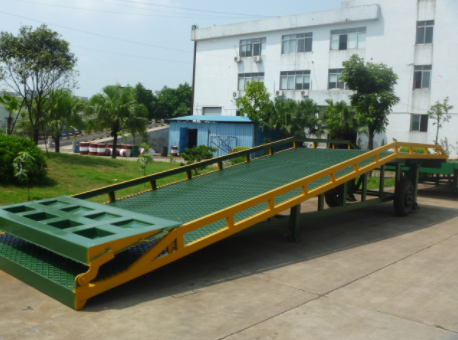
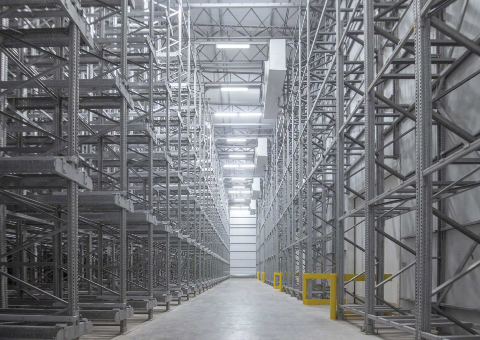






 link:
link:




